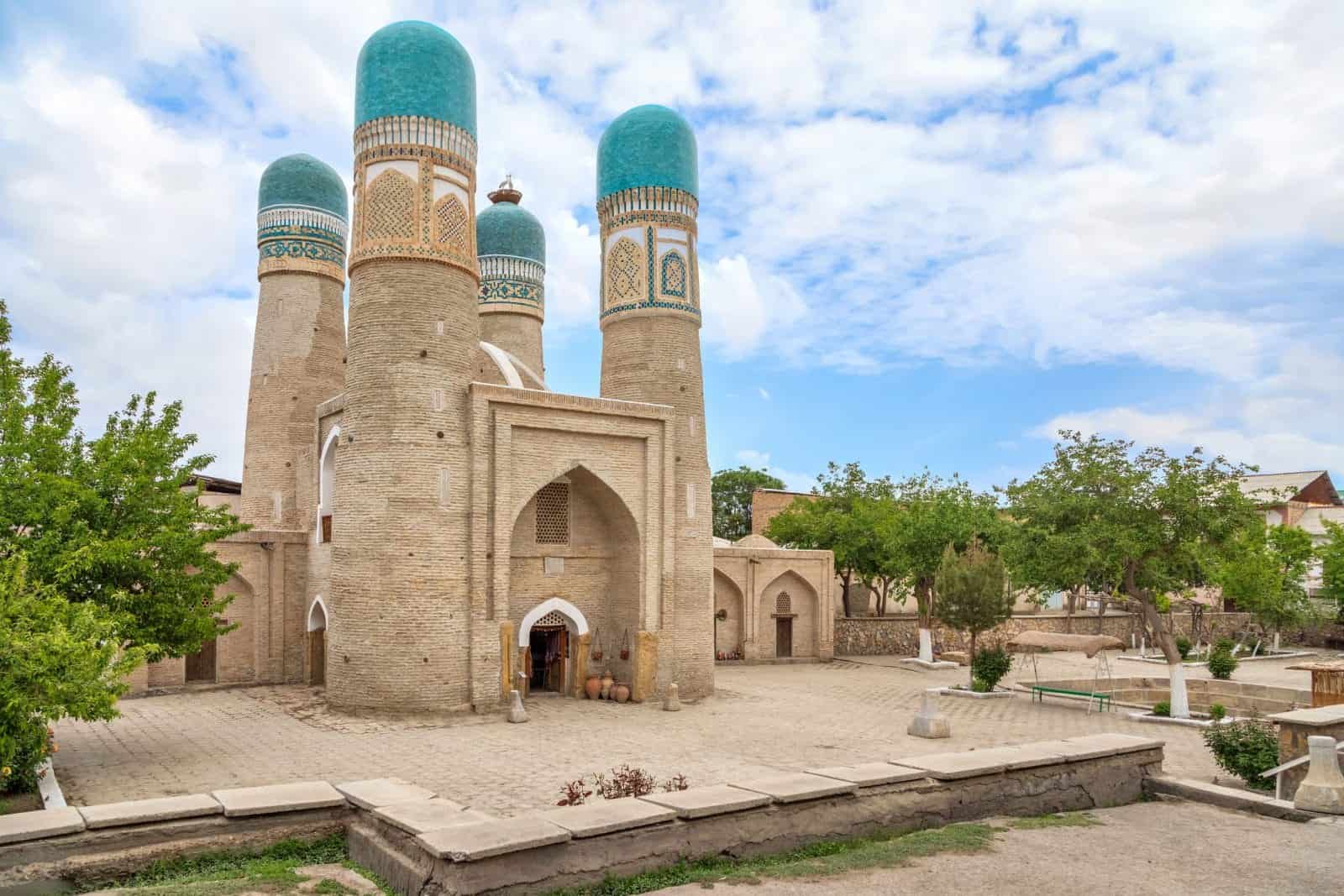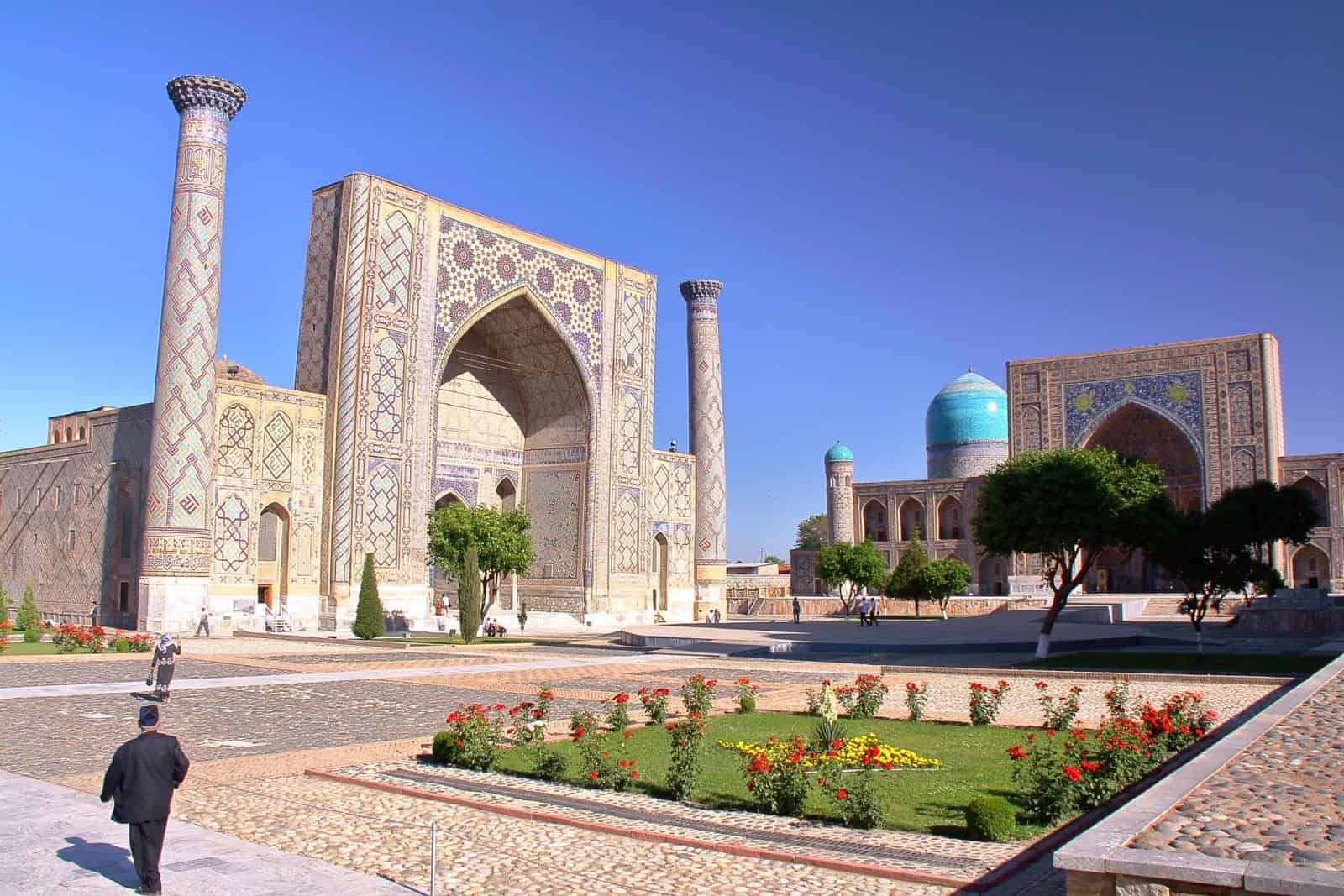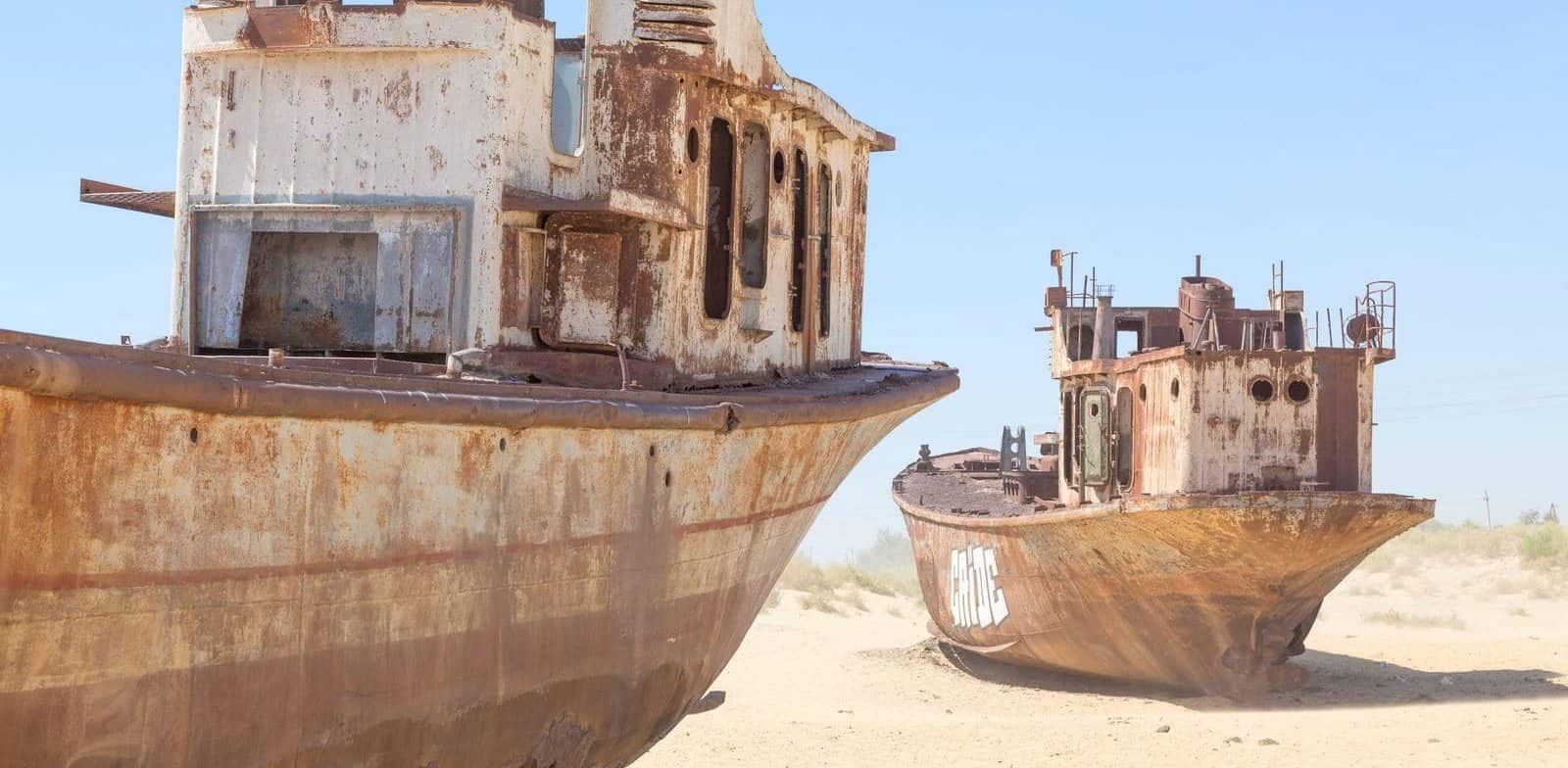Table of Contents
Explore the rich Uzbekistan Culture as we delve into a comprehensive understanding of the customs of the country, with its vibrant and diverse heritage, encompassing traditions, values, and unique customs and practices.
Uzbeks hold a deep appreciation for hospitality, warmly embracing guests with open hearts. Family lies at the heart of Uzbek society, fostering strong connections and a profound sense of community. It is crucial to acknowledge that Uzbekistan culture continues to evolve, shaped by historical occurrences, regional dynamics, and global interactions.
Gaining insight into the culture of Uzbekistan can offer valuable perspectives on the intricate and varied society within the nation.
Uzbekistan Culture
To delve into the diverse culture and customs of Uzbekistan, here are the key points to get started:
- Ethnic Diversity: Uzbekistan boasts a rich tapestry of ethnic groups, each contributing its distinct customs and traditions. Uzbeks, Tajiks, Karakalpaks, and Kazakhs are among the prominent ethnic communities.
- Languages: Uzbek is the official language, while Russian is often used in various regions. Numerous regional languages and dialects also flourish across the nation.
- Islamic Practices: Uzbekistan is predominantly a Muslim country, and Islam plays a significant role in shaping Uzbekistan culture, influencing daily routines, values, and societal norms. This includes observing daily prayers, fasting during Ramadan, and adhering to Islamic dietary guidelines. The majority of Uzbeks follow Sunni Islam.
- Greeting Etiquette: Greetings hold special importance in Uzbekistan culture. Handshakes are common among men, while men and women typically do not shake hands. Instead, they exchange verbal greetings with polite expressions.
- Traditional Clothing: Traditional Uzbek attire, such as the “chapana” for men and similarly styled dresses for women, remains a popular choice. Traditional clothing varies by region and ethnicity but remains an integral part of Uzbek identity.
- Cuisine: Uzbek cuisine features dishes like plov (rice pilaf), kebabs, and an array of flavorful stews. It reflects a fusion of Central Asian, Persian, and Russian culinary influences.
- Hospitality: Uzbeks are known for their warm hospitality. When guests visit, they are offered tea, meals, and often a place to stay. It is considered impolite to decline such invitations.
- Respect for Elders: Showing respect for elders is deeply ingrained in Uzbek customs. Younger generations demonstrate deference to their seniors through words and actions.
- Arts and Crafts: Uzbekistan has a rich tradition of arts and crafts, including exquisite silk weaving, ceramics, calligraphy, and miniature painting.
- Music and Dance: Traditional Uzbek music incorporates instruments like the dutar and doira. Folk dances are integral to cultural celebrations.
- Celebration of Festivals: Uzbeks celebrate various religious and cultural festivals, including Eid al-Fitr, Eid al-Adha, and Navruz (New Year). These festivities often involve special prayers, feasts, and gatherings with loved ones.
- Family and Community: Family plays a central role in Uzbek society, and strong community ties are essential for support and social cohesion.
- Gender Roles: Traditional gender roles are prevalent, with distinct social spheres for men and women. However, evolving dynamics, especially in urban areas, are challenging these norms.
- Arranged Marriages: Arranged marriages are a common practice in Uzbekistan. Families are instrumental in matchmaking, viewing the union as a commitment not only between individuals but also between families.
- History and Resilience: Uzbekistan’s history, marked by various empires and conquests, has shaped its culture, fostering resilience and a deep connection to its heritage.
These customs are integral aspects of Uzbekistan culture, observable in daily life, and reflect the country’s rich cultural heritage, strong community bonds, and traditions.
Uzbekistan Traditional Attire
Uzbekistan Traditional Attire reflects the country’s diverse cultural heritage, regional distinctions, and historical influences. Uzbek clothing serves both functional and cultural purposes, embodying the nation’s identity and history.
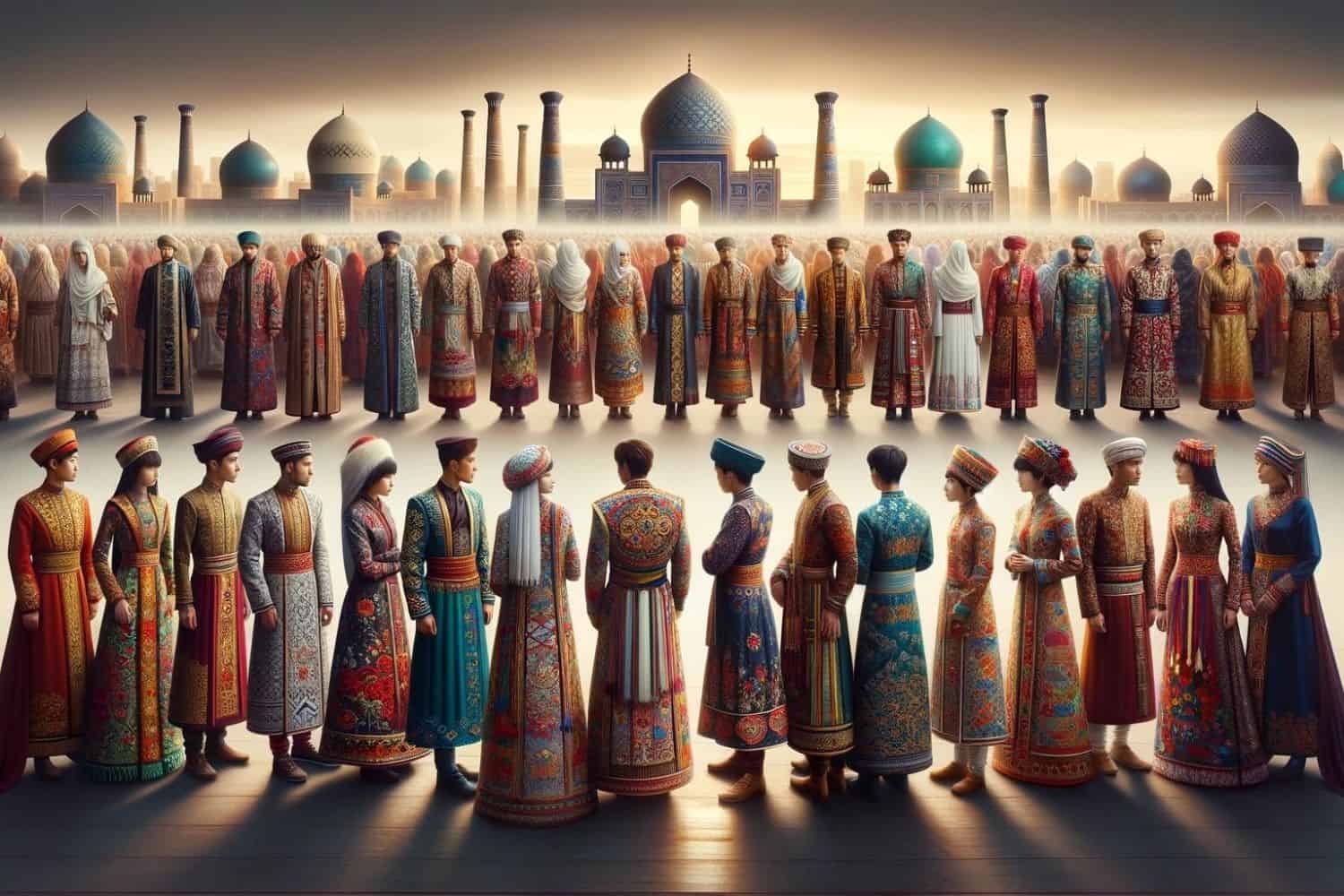
1. Regional Variation: Uzbekistan’s traditional clothing varies across regions due to differences in climate, lifestyle, and ethnic traditions. In colder, mountainous areas, people tend to wear heavier and layered garments, while in warmer regions, lighter clothing is favored.
2. Uzbek Dress: The traditional attire of Uzbek people often includes the “chapana” or “kurta” for men and the “kurta” with loose pants or “chapan” for women. These garments are typically adorned with intricate embroidery and reflect the vibrant colors and patterns of Uzbekistan culture.
3. Karakalpak Attire: The Karakalpak people, an ethnic group in Uzbekistan, have their unique traditional clothing. It may include wide trousers, long coats, and distinctive headwear, often made from sheepskin.
4. Nomadic and Tribal Clothing: Nomadic tribes, such as the Karakalpak and Kazakh communities, have clothing designed for their mobile lifestyles. These garments may feature bold colors, heavy jewelry, and specific head coverings, symbolizing tribal identity.
5. Modesty and Cultural Significance: Traditional Uzbek clothing emphasizes modesty, with loose-fitting garments that cover the body. The choice of fabrics, colors, and patterns often carries cultural and regional significance, while attire may also signify one’s social or marital status.
6. Special Occasion Attire: Uzbeks dress elaborately for special events like weddings, festivals, and religious celebrations. These occasions offer an opportunity to showcase ornate clothing adorned with intricate embroidery, beadwork, and jewelry.
7. Modern Influences: While traditional attire holds significance, urbanization and modern influences have led to the integration of Western clothing in everyday life, particularly in cities like Tashkent. Many Uzbeks combine traditional and contemporary clothing, reflecting evolving lifestyles and global fashion trends.
Uzbekistan traditional attire is not merely clothing; it is a vibrant expression of the nation’s cultural diversity, history, and identity. It serves as a visual representation of the rich tapestry of traditions that have shaped Uzbek society over centuries.
Uzbekistan Marriage Traditions
Uzbekistan Marriage Traditions are deeply rooted in the country’s rich cultural and historical heritage, with variations across different regions and ethnic groups. These traditions are integral to Uzbek society and reflect a blend of cultural, religious, and social influences.
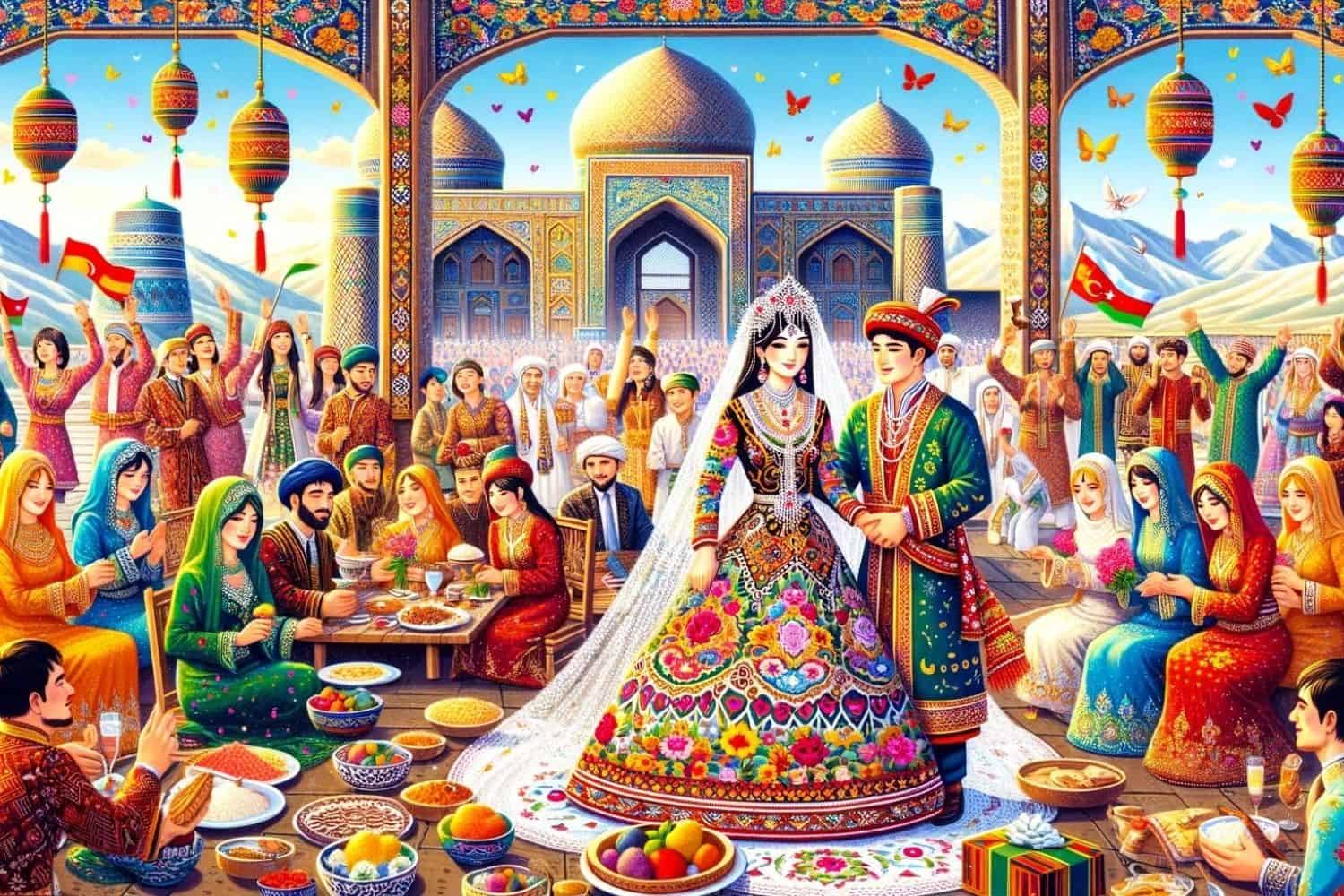
1. Arranged Marriages: Arranged marriages are prevalent in Uzbekistan, with families often playing a central role in selecting suitable partners for their children. Arranged marriages are seen as a way to preserve cultural values, family ties, and social harmony.
2. Matchmakers: Matchmakers, known as “khotinchi” or “to’yi matchon” in Uzbek, assist in finding compatible matches for individuals. They consider factors such as family background, social status, and religious beliefs when suggesting potential partners.
3. Engagement: The engagement process begins with a formal agreement between the families, known as “uchta qilish” or “soch samarkon,” marking the commitment of the couple to marry. It is often accompanied by the exchange of gifts and the sealing of the engagement with a communal meal.
4. Wedding Celebrations: Uzbek weddings are grand and festive affairs that can last several days. They typically involve traditional rituals, music, dance, and abundant feasting. The central wedding ceremony, called the “Nikoh” or “Toy,” involves the signing of the marriage contract and may take place in a mosque or at home.
5. Bride Price (Mahr): The groom is traditionally expected to provide a “mahr” or dowry to the bride as a sign of commitment and financial support. The size and form of the mahr may vary based on regional customs and the families involved.
6. Bridal Attire: Brides in Uzbekistan typically wear beautifully embroidered dresses, often in vibrant colors. They accessorize with intricate jewelry, and the specific style of attire varies by region and ethnic group.
7. Post-Wedding Customs: Following the wedding, various traditions may continue, including the “Osh qorish” or “Oshi palov” (the first meal prepared by the bride for her new family) and other symbolic rituals signifying the bride’s transition into her new household.
8. Religious Significance: Marriage in Uzbekistan has religious significance, as it is often conducted in accordance with Islamic principles. The “nikoh” or marriage contract includes recitation from the Quran and is overseen by an Islamic cleric.
9. Family and Community Involvement: Uzbek weddings are community celebrations, involving extended families and the wider community. These events strengthen social bonds and serve as an opportunity for community members to show their support and goodwill.
10. Changing Dynamics: While arranged marriages remain common, there is a growing trend in urban areas of love marriages, where individuals choose their partners based on personal preferences. However, even in such cases, traditional customs and ceremonies may still be observed.
Uzbekistan marriage traditions reflect the importance of family, community, and cultural identity in Uzbek society. These customs continue to evolve while preserving the country’s cultural heritage and social connections.
Uzbekistan Food Culture
Uzbekistan food culture is a captivating blend of influences from Central Asia, the Middle East, and the Silk Road, resulting in a rich and diverse culinary tradition.
- Regional Variation: Food from Uzbekistan diverse geography, encompassing fertile valleys, arid plains, and mountainous terrain, has led to a wide range of regional cuisines. Each area integrates local ingredients and traditional cooking techniques, contributing to a rich tapestry of flavors unique to each locality.
- Staple Foods: Uzbek cuisine relies on staple foods such as rice, bread (especially “non” or Uzbek bread), and various grains like wheat and barley. Rice dishes like “plov” and “manti” are iconic Uzbek dishes.
- Kebabs and Grilled Meats: Grilled meats, particularly kebabs, are a cornerstone of Uzbek cuisine. Lamb, beef, and chicken are commonly marinated with spices and grilled to perfection.
- Aromatic Spices: Uzbek dishes feature an array of aromatic spices and herbs like cumin, coriander, paprika, and dill, adding depth and flavor to the cuisine.
- Traditional Dishes: Uzbekistan boasts traditional dishes like “osh” (pilaf), “lagman” (noodle soup), “somsa” (samosas), and “shashlik” (grilled skewers). These dishes may have regional variations.
- Dairy Products: Dairy products hold a prominent place in Uzbek cuisine, with yogurt, kefir, and various types of cheese commonly used in dishes like “katyk” (yogurt soup) and “kurt” (dried cheese balls).
- Tandoor Baking: The tandoor, a clay oven, plays a crucial role in Uzbek cuisine. It is used for baking bread, particularly “non,” and preparing dishes like “tandoori bread” and “tandoori kebabs.”
- Sweets and Desserts: Uzbek sweets are often made with ingredients like nuts, dried fruits, and honey. “Halva,” “navat,” and “peshmak” are popular desserts in Uzbekistan.
- Tea Culture: Uzbekistan has a vibrant tea culture, with green and black tea being widely enjoyed. Tea is often served with sweets and is a symbol of hospitality.
- Family and Community Dining: Uzbekistan culture places great importance on communal dining. Families and friends gather around a “dastarkhan” (tablecloth) to share meals, fostering a sense of unity and togetherness.
- Influence of the Silk Road: Uzbekistan’s location along the historic Silk Road has contributed to the diversity of its cuisine, with influences from various cultures and traders.
- Resilience and Adaptability: Despite its complex history, Uzbek cuisine has remained resilient and adaptable. It continues to thrive and evolve, preserving its rich culinary heritage while embracing modern influences.
Book our services
Our services as a travel agency in Uzbekistan ensure that your journey is not only enjoyable but also informative and hassle-free. Uzbekistan’s cultural delights, historical marvels, and natural wonders await your exploration with RJ Travel LLC. Our Uzbekistan Private Tours are designed to immerse you in the rich cultural heritage, historical significance, and breathtaking landscapes of this extraordinary nation.
Contact Us and our team will make sure to help you plan your trip to Uzbekistan when it’s safe and ready for travel. Whether you’re interested in joining a pre-arranged Uzbekistan small group tour or creating a custom itinerary, we are here to make your Uzbekistani adventure an unforgettable reality.
More About Uzbekistan
[the-post-grid id=”50444″ title=”Uzbekistan Main page”]
Book Your Trip to Uzbekistan Today!
Embark on an unforgettable journey and explore the allure of Uzbekistan through our exclusive tours.

